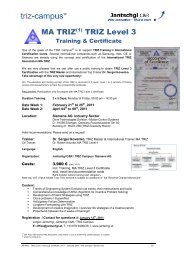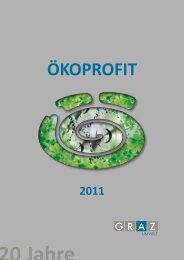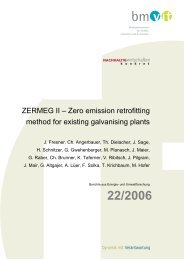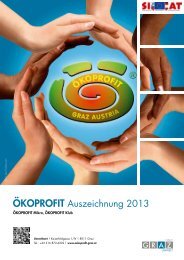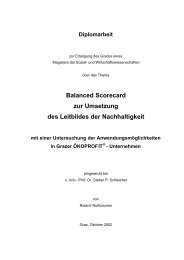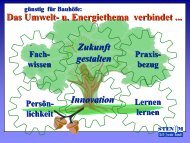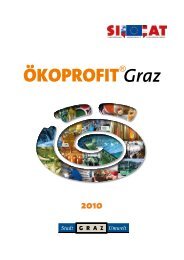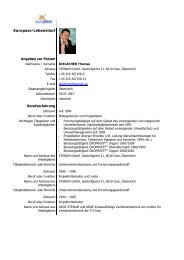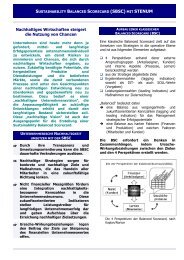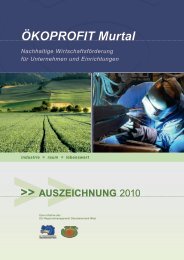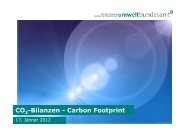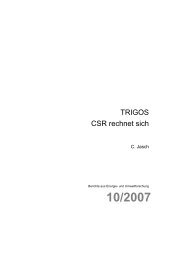Promoting Resource Efficiency in Small & Medium size ... - UNEP
Promoting Resource Efficiency in Small & Medium size ... - UNEP
Promoting Resource Efficiency in Small & Medium size ... - UNEP
Create successful ePaper yourself
Turn your PDF publications into a flip-book with our unique Google optimized e-Paper software.
6.4.3 Office materials<br />
Material efficiency – Investigate your company’s procurement policy to see<br />
if material efficiency is mentioned or if there is room for improvement.<br />
Open up communication and beg<strong>in</strong> employee engagement around<br />
material efficiency.<br />
Procurement policyy<br />
- Get an overview of raw and processed materials used <strong>in</strong> the<br />
company. Exam<strong>in</strong>e raw and processed materials and determ<strong>in</strong>e<br />
their environmental relevance and possible substitution.<br />
- Ask the supplier for product <strong>in</strong>formation (e.g. safety data sheets).<br />
- Collect <strong>in</strong>formation on environmental or sector-specific labels<br />
for materials used <strong>in</strong> the company and ask the suppliers for site<br />
certifications.<br />
- Use the criteria and guidel<strong>in</strong>es of environmental labels to def<strong>in</strong>e<br />
guidel<strong>in</strong>es for the company’s tenders.<br />
- Ask the supplier to offer environmentally friendly alternatives.<br />
- Does a central unit exam<strong>in</strong>e products before they are used <strong>in</strong> the<br />
company for the first time?<br />
- If clean<strong>in</strong>g is carried out by an external clean<strong>in</strong>g team, does the<br />
company know which detergents are used?<br />
- Are the procurement activities of the company documented?<br />
- Does the company tra<strong>in</strong> its employees <strong>in</strong> the handl<strong>in</strong>g of a new<br />
product?<br />
- Are all environmentally friendly purchased products marked and<br />
are the underly<strong>in</strong>g criteria applied?<br />
- Does the company have a list of products for which no<br />
environmentally friendly alternative has been found to date?<br />
- Does the company regularly check the product packag<strong>in</strong>g to see<br />
how environmentally friendly it is (multi-way packag<strong>in</strong>g system,<br />
recyclability)?<br />
Employee Engagement<br />
- Is there a central purchas<strong>in</strong>g unit <strong>in</strong> the company?<br />
- Does the company’s environmental policy mention green<br />
procurement?<br />
- Do employees know who exactly is responsible for which type of<br />
procurement <strong>in</strong> the company?<br />
- Are environmental safety managers consulted <strong>in</strong> procurement<br />
activities?<br />
- Does the company <strong>in</strong>form its employees when a new product<br />
will be used <strong>in</strong> time for them to learn new safety and handl<strong>in</strong>g<br />
requirements?<br />
Paper<br />
- Pr<strong>in</strong>t paper on both sides (duplex, double-sided)<br />
- Save one side pr<strong>in</strong>ted paper for scratch paper/notes<br />
Toner Cartridge<br />
- Buy refilled/refillable toners<br />
- Use toner-conservation mode or ‘Economode’ if available as<br />
pr<strong>in</strong>ter sett<strong>in</strong>gs, at least for draft or <strong>in</strong>ternal pr<strong>in</strong>touts<br />
6.4.4 Storage materials<br />
Disposable Pallet<br />
• Sell disposable wood pallets for heat<strong>in</strong>g purposes<br />
6.4.5 Utilities materials<br />
Air Conditioner<br />
• Use clean air at <strong>in</strong>let if possible, avoid the supply of dusty,<br />
unfiltered air to ensure a long useful life for air filter<br />
Equipment Conventional HVLP Airless Air Assisted Airless Electrostatic<br />
Transfer <strong>Efficiency</strong> 20% - 60% 65% - 90% 40% - 60% up to 95%<br />
Air Pressure (bar) 0,3 - 2 0,2 – 0,7 None 0,2 – 2,0 Depends on gun type<br />
Fluid Pressure (bar) 0,5 – 2,0 0,6 – 2,0 30 - 200 15 - 70<br />
Air Volume (m³/m<strong>in</strong>) 0,15 – 0,30 0,42 – 0,84 None 0,15 – 0,45<br />
Comments<br />
Good for wide range<br />
of pa<strong>in</strong>t viscosities<br />
Best results for pa<strong>in</strong>ts of<br />
moderate to low viscosity<br />
Used for viscous pa<strong>in</strong>ts,<br />
thick film, or high<br />
production; also used for<br />
conventional pa<strong>in</strong>ts<br />
Typically used for<br />
viscous pa<strong>in</strong>ts with thick<br />
film build-up or high<br />
production rrates; also<br />
used for conventional<br />
pa<strong>in</strong>ts<br />
Available <strong>in</strong> all gun types.<br />
Problems with water-based<br />
pa<strong>in</strong>t and non-metallic<br />
work pieces<br />
Spray Gun Cost<br />
Prices start at € 100 - € 500 € 100 - € 500<br />
Turb<strong>in</strong>e systems € 700 € 3,500 € 2,500 € 5,000<br />
Table 16: Comparison of different pa<strong>in</strong>t application equipment 57<br />
57) http://www.p2ad.org/documents/ma_spraypa<strong>in</strong>t.html and http://www.p2pays.org/ref/09/08058.htm<br />
61



